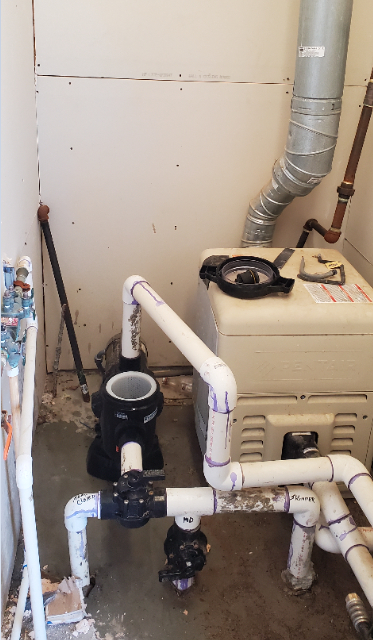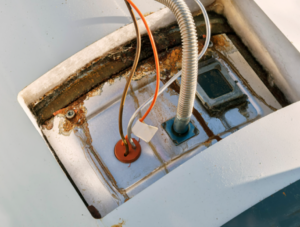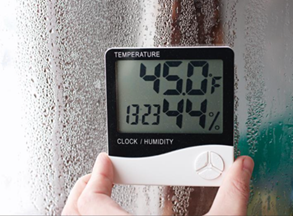6 Questions That Affect Electronics Claims With Water Losses
We’re all taught early in our lives that electronics and liquid don’t mix. In addition to the many safety concerns, water can render electronics inoperable and lead to claims. Before you settle for an unnecessary replacement, there are six questions you or your equipment expert should be able to answer to ensure your resolution is accurate.
Question 1: Did the electronic get fully submerged, or partially wet?
The amount of water on or in an electronic can affect the scope of damage. A lot of home electronics are exposed to moisture regularly, either by design or incidentally. A spilled drink may not affect a toaster if it splashes on the outer casing, and electronics manufactured for outdoor use, like solar panels, are usually made to withstand a certain amount of rain or snow.
Each water exposure affects various electronics differently. Some, like this pool pump, are more resilient against water, and the scope of damage will depend on what components were exposed.
Full submersion poses a more serious threat because it presents more opportunities for the water to get inside to the more delicate and sensitive components like the control board and circuits that keep the electronic functioning. An expert familiar with the equipment can determine which components were affected by the water.
Question 2: Which components came into contact with water?
Most vulnerable components are housed within some kind of protective casing, but if water got inside the electronic, it’s time to ask exactly what has been affected.
Sodium and chloride ions in much of the water we come into contact with are conductors of electricity. If an electronic device is powered on when exposed to water, it could create an electrical connection for certain components where no connection should be, causing electricity to flow erratically and damage the device in a condition known as a short circuit.
While a device may not be working as intended, if key components such as control boards weren’t impacted by the water, repairing or replacing water-damaged elements may return it to pre-loss condition.
Question 3: How long was it in contact with water?
Prolonged water exposure can lead to rust, which spreads and affects more than just the part of the electronic that came into direct contact with the water.
Even if an electronic seems to be in working order immediately after a water event, it might not be in the clear from water damage. Prolonged exposure to moisture can lead to corrosion and rust, which eat away at the components inside or prevent movement essential to operation. The amount of corrosion is dependent not only on the duration of the event, but the contaminants in the water.
Question 4: What type of water did it encounter?
Did you know there are three distinct types of water that pose varying levels of threat to electronics? Clean water, like rainwater or water out of a tap, can damage internal circuitry if it gets inside electronics because it contains impurities. Gray water is wastewater from appliances and taps; the elements within gray water also have potential to make electronics malfunction.
Most damaging of all is black water, which contains chemicals, sewage, oils, and other contaminants that can wreak havoc on electronics. Black water often enters structures and affects electronics due to sewage backup, flooding, or prolonged standing water. This type of water is the most likely to cause electronics to require a full replacement.
Question 5: What have the humidity levels been?
Just like the duration of water exposure, this question is important because its answer could lead to a secondary form of water damage. Humidity is less likely to be noticed immediately than a sudden spill or floodwaters, but it can be just as insidious. Prolonged exposure to unmitigated high humidity may also lead to mold, which can impact settlements.
For example, water spots can develop between sheets of glass in devices with LCD or LED screens, such as televisions or computer monitors, when they’re exposed to water – including long periods of high humidity. If the screen is heavily saturated with water, these spots may become darker and resemble ink blots.
Despite condensation at lower moisture levels, humidity below 60% typically does not pose a risk to electronics.
Question 6: What condition was the item in prior to the loss?
Often, if electronics are working well enough, policyholders may overlook or not report issues until a complete failure occurs. An expert inspection will determine whether an unrelated peril, such as wear and tear, is the actual cause of a loss reported as water damage.
In some instances, repairing water-damaged equipment may be possible but more expensive than a replacement. In these circumstances, make sure you’re settling for Like Kind and Quality equipment.
Don’t assume a water loss claim is straightforward. Electronics are complicated, and it takes an expert to test them and determine cause of loss and scope of damage. Contact StrikeCheck or submit an assignment today to find out how our team can help you with your water damage questions and more.



